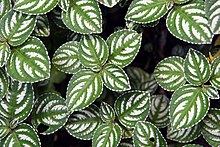Ticodendron
Ticodendron incognitum is the only species of Ticodendron, and the only member of the family Ticodendraceae. It is most closely related to the family Betulaceae.
| Ticodendron | |
|---|---|
 | |
| Ticodendron incognitum | |
| Scientific classification | |
| Kingdom: | Plantae |
| Clade: | Tracheophytes |
| Clade: | Angiosperms |
| Clade: | Eudicots |
| Clade: | Rosids |
| Order: | Fagales |
| Family: | Ticodendraceae Gómez-Laur. & L.D.Gómez[2] |
| Genus: | Ticodendron Gómez-Laur. & L.D.Gómez |
| Species: | T. incognitum |
| Binomial name | |
| Ticodendron incognitum Gómez-Laur. & L.D.Gómez | |
It was discovered only in 1989 in Costa Rica, having been overlooked previously due to its habitat in poorly researched cloud forests and its very 'ordinary' appearance; further research showed its range extends from southern Mexico (Veracruz, Oaxaca, Chiapas), south through Central America to Panama.[3][4][5][6]
It is a tree, 20–30 m tall, superficially resembling an alder in appearance, with alternate, simple leaves 5–12 cm long with a serrated margin.
Fossil record
†Ferrignocarpus bivalvis fossil fruits, from the Middle Eocene of Oregon and the Early Eocene London Clay flora of southern England, correspond closely in morphology and anatomy to fruits of extant Ticodendron.[7]
References
- Nelson (1998). "Ticodendron incognitum". IUCN Red List of Threatened Species. 1998. Retrieved 11 May 2006.CS1 maint: ref=harv (link) Listed as Vulnerable (VU A1c v2.3)
- Angiosperm Phylogeny Group (2009). "An update of the Angiosperm Phylogeny Group classification for the orders and families of flowering plants: APG III". Botanical Journal of the Linnean Society. 161 (2): 105–121. doi:10.1111/j.1095-8339.2009.00996.x. Archived from the original (PDF) on 2017-05-25. Retrieved 2013-07-06.
- Kew Checklist of Selected Plant Families
- Nelson Sutherland, C.H. (2008). Catálogo de las plantes vasculares de Honduras. Espermatofitas: 1-1576. SERNA/Guaymuras, Tegucigalpa, Honduras.
- Gómez-Laurito, Jorge & Gómez P., Luis Diego 1989. Ticodendron: A new tree from Central America. Annals of Missouri Botanical Garden 76(4): 1148–1151
- Ulloa Ulloa, C. 2001. Ticodendraceae. En: Stevens, W.D., C. Ulloa, A. Pool & O.M. Montiel (eds.). Flora de Nicaragua. Monographs in systematic botany from the Missouri Botanical Garden 85(3): 2452
- Fruits of Ticodendraceae (Fagales) from the Eocene of Europe and North America by Steven R Manchester - International Journal of Plant Sciences 172(9):1179-1187 · November 2011
